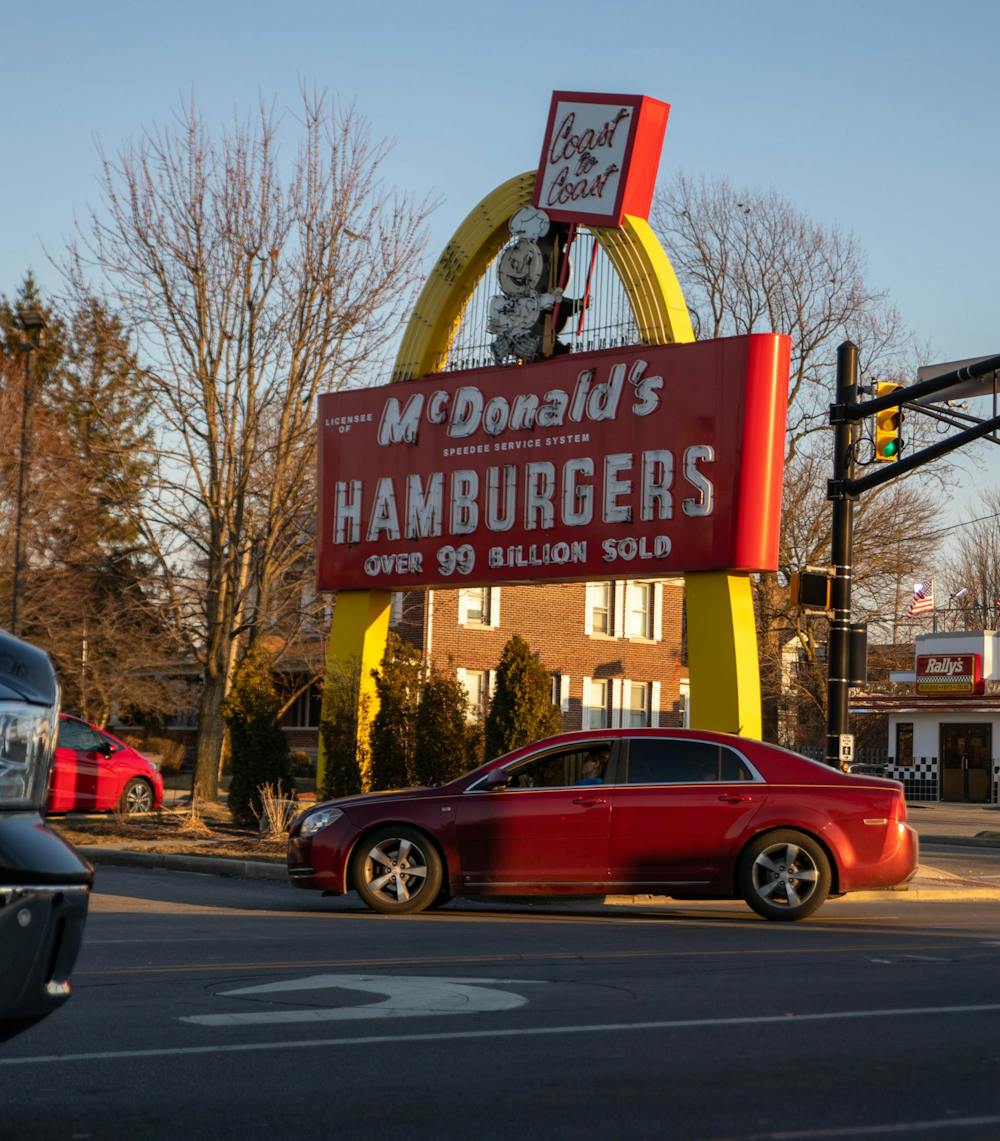Learn more about the historic McDonald’s Arch sign in Muncie
Muncie’s original golden arch design is one of just three left in the United States. The other two are located in Green Bay, Wisconsin, and Cincinnati, Ohio.
The sign is original to the building, which was built in 1958.
Source: Roadside Architecture
Watch the Association of Collegiate A Cappella's collaboration with McDonald's on Twitter.
The sizzle of burgers on the grill, the shake-shake of salt on fresh french fries and the gush of Coca-Cola from the drink fountain — these staples can all be found under an arch that has become a threshold of opportunity and an ode to the past.
A tweet from the City of Muncie Feb. 19, 2021, featuring two photos of the McDonald’s sign located on East Charles Street, has been generating a social media buzz. The tweet said Muncie has one of only three remaining original single-arch McDonald’s sign designs in the United States.
“My communications person went ahead and did a post on it, and what we discovered is that it’s one of the most highly shared posts that the city has ever [made],” Muncie Mayor Dan Ridenour said. “So, clearly, it has had an impact.”
Years ago, Ridenour said, many kids his age would ask their parents to stop for lunch whenever they saw that golden arch while traveling through different towns.
McDonald’s has been shining its spotlight on Ball State University and the City of Muncie since the location opened in 1958. In addition to the attention garnered for the historic sign, McDonald’s recently partnered with the Association of Collegiate A Cappella (ACA) for an advertisement collaboration in February 2021.
In November 2020, an email that was thought to be spam turned out to be a monumental opportunity for Ball State’s ACA, said ACA Public Relations Director Ben Heber.
“A representative from a public relations firm for McDonald’s [said] we would be a really great collaborator with [McDonald’s], and we were like, ‘What?’” Heber said. “It was a very surreal moment.”
After reading through the email, Heber and his executive board held an emergency meeting that same night to discuss whether or not they would like to create a 60-second commercial with a jingle to advertise “McDelivery” and curbside pickup — both services promoted by McDonald’s because of the coronavirus pandemic.
ACA worked with McDonald’s to bring this idea to fruition. As creator of the jingle, Heber said the songwriting process took him about 48 hours, and teaching it to volunteer members took about a week. The first draft was completed in December 2020, but was not released to the public until the end of February 2021.
“Unfortunately, because of a few red tape issues, we had to postpone the posting of [the commercial] until a few weeks ago,” Heber said. “It took a while, but that post — out of anything we’ve ever posted — was the most engaged with, most liked and most viewed, which was so rewarding.”
Heber said this collaboration was a shaping moment for the a cappella group as a whole.
“I was ecstatic,” he said. “I was excited that our organization was chosen for this opportunity to work with McDonald’s. It felt like the real deal.”
The historic golden arch sign is more than just an advertisement and landmark for the fast food restaurant, Ridenour said. With more than 100 retweets and 650 likes, the tweet stressed the importance of history in Muncie — something Ridenour wants to keep in the city as long as possible.
“I will do everything in my power to encourage the ownership of the McDonald’s franchises here locally to continue with that sign,” he said. “We think it’s a great feature for the City of Muncie.”
Ridenour said few changes have been made to the original piece of architecture since it was put up in 1958. The sign was restored in 2006 and again in 2013.
According to Roadside Architecture, the 2006 renovation included “fully functioning, animated neon.” A full restoration was completed in 2013.
“Those of us who are a little bit more advanced in age can remember those golden arches everywhere that we would go,” he said. “It [also] brings back very positive memories for me.”
Contact Grace Bentkowski with comments at gmbentkowski@bsu.edu or on Twitter @gbentkowski.





